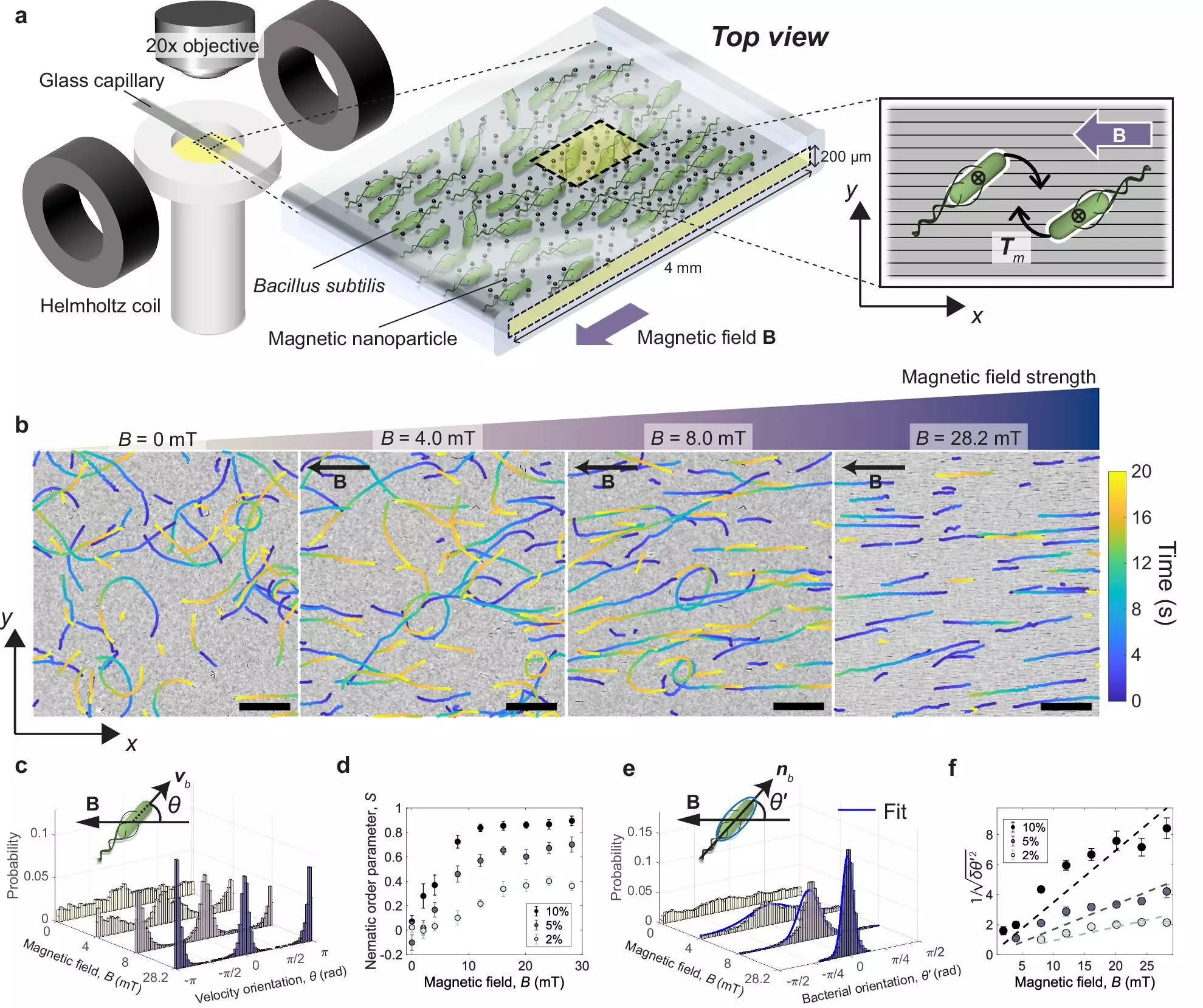A recent study conducted by researchers at Finland’s Aalto University has revealed a groundbreaking method to align bacteria using magnets. While the primary goal of this research was to manipulate bacteria into orderly arrangements, it also holds immense potential for various scientific studies including complex materials, phase transitions, and condensed matter physics. This innovative approach, detailed in the journal Communications Physics, involves leveraging magnets to guide the movement of bacteria within a liquid medium.
The Mechanism Behind Magnetic Alignment
In this study, non-magnetic bacteria, specifically Bacillus subtilis, were mixed with millions of magnetic nanoparticles in a fluid. The rod-shaped bacteria, acting as voids within the magnetic fluid, respond to the application of a magnetic field. When the magnets are activated, the bacteria align themselves with the magnetic field to achieve the lowest energy state. This alignment is crucial as any deviation from it incurs additional energy costs, making it energetically favorable for the bacteria to line up in the direction of the magnetic field.
The researchers observed that the strength of the magnetic field directly influences the alignment of the bacteria. As the magnetic field intensity increased, the bacteria exhibited a more organized swimming pattern, forming nearly perfect rows in response to the magnetic cues. Additionally, the population density of bacteria in the liquid affected the alignment process. High bacterial concentrations led to increased turbulence-like effects, necessitating a stronger magnetic field to overcome the disruptive forces caused by the swimming bacteria.
Understanding Active Turbulence
The phenomenon of active turbulence, induced by the collective movements of individual units such as bacteria, sperm, or epithelial cells, plays a crucial role in this study. Active turbulence differs from conventional turbulence encountered in fluid dynamics and is characterized by the emergence of vortices and turbulent structures within the fluid. By harnessing the dense bacterial suspensions as a tool to study active turbulence, researchers can gain valuable insights into the behavior of active matter and its dynamic patterns at a microscopic level.
Beyond the fascinating aspect of controlling bacterial alignment, this research has far-reaching implications for various fields including active matter physics and bioengineering. Manipulating bacterial movement in conjunction with turbulent flow opens up possibilities for self-sustaining materials, microrobotics, biological engines, and targeted drug delivery systems. By fine-tuning alignments through magnetic fields, researchers can delve deeper into phase transitions, condensed matter physics, and other fundamental research domains.
The future directions of this study involve exploring the effects of dynamic magnetic fields on bacterial alignment. By introducing rotating magnetic fields or other dynamic variations, researchers aim to enhance their understanding of the interplay between magnetic cues and bacterial behavior. This iterative approach to experimentation will pave the way for novel discoveries in the realms of active matter physics and biomimetic systems.
The ability to precisely control bacterial alignment through magnetic manipulation signifies a paradigm shift in research on active matter and complex systems. By harnessing the power of magnets to orchestrate the movement of bacteria, scientists are unlocking new avenues for innovative applications and fundamental discoveries in physics, engineering, and biotechnology. The magnetic alignment of bacteria serves as a testament to the ingenuity of scientific exploration and the boundless possibilities that arise from interdisciplinary collaboration and technological advancements.


Leave a Reply